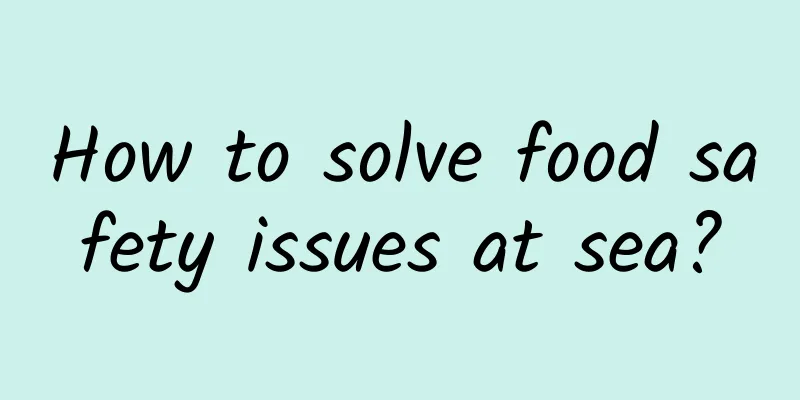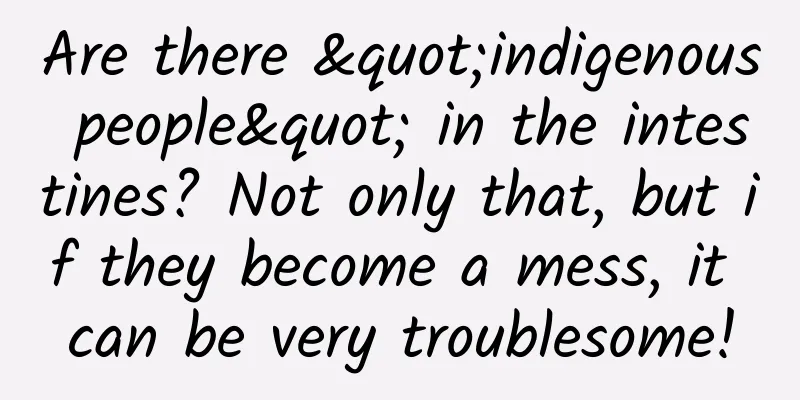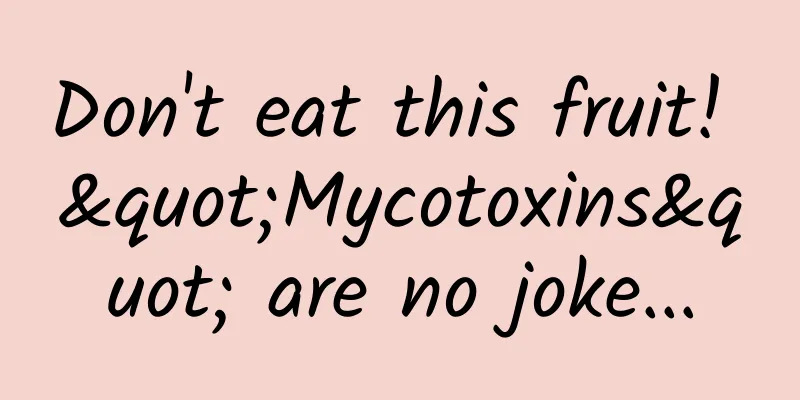How to solve food safety issues at sea?

|
Listen to the interpretation of "Science Interpreter" Food crisis at sea Author | Scientific interpreter Xia Erxin When it comes to sailing, everyone will think of some great navigators, such as Columbus from Italy and Zheng He from China. However, everyone often overlooks a basic question - what do these navigators eat on the vast ocean? So, today I would like to discuss with you the "food crisis during sailing". As the saying goes, "Man is iron and rice is steel." Food is extremely important and is indispensable to human beings. Let me first talk about the food on the Western fleet! Since there were no refrigerators or other effective preservation technologies at that time, the crew could not eat fresh fruits and vegetables at all. The food they could eat was almost inedible: hard and dry biscuits, which might be full of weevils; there were also dry beans, which were either very hard or very sticky; there were even smelly cheeses crawling with worms, which were disgusting. At sea, wine might become sour, and even water would become rotten. Of course, they could not eat fresh meat, but only pickled meat, and before eating, they had to scrape off the mold on the surface. The freshly caught fish they finally ate often looked very strange, and there was a risk of poisoning if they ate it! Not only was the food unpalatable, but the most important thing was the lack of nutrition, especially the lack of vitamin C, which caused some crew members to suffer from terrible scurvy, which was painful and tortured. **Compared to the Western fleet, the Chinese came up with some wonderful ways to solve the "food crisis". **So how did we Chinese solve this problem? **** Please look, this is one of the standard ship types used by Zheng He when he sailed to the West - the Fu Ship. Do you know what the two rows of cabinets at the bow are used for? We call them "cage cabinets" , the "cage" of cage and the "cabinet" of cabinet. One of their important uses is to raise poultry in captivity. In this way, wouldn't the problem of eating meat be solved? ! So what about vegetables? The clever Chinese crew brought beans on board, soaked them in water, and sprouted them, thus naturally solving the vegetable problem. What's more clever is that the green tea that Chinese people love to drink is rich in vitamin C. In addition, the rice processing technology on board was limited at that time, and the processed rice often had husks on it. This kind of rice is called brown rice. Brown rice is also rich in vitamin C. The ancient Chinese were really smart! Even though the technology was not advanced enough and the conditions were not very good at that time, it did not prevent people from using their brains to think of some unique and novel ideas. Of course, we should do the same now. Only by being brave enough to innovate and break through can we make progress and development! |
>>: Why can airplane wings, which are so thin, support engines weighing dozens of tons?
Recommend
Marketing and promotion skills | The marketing behind the crazy rush for Uniqlo’s co-branded T-shirts!
Recently, the Kaws x Uniqlo co-branded T-shirts w...
Come, let’s explain in simple terms what CPA and OCPC are.
Ever since Toutiao launched the CPA and OCPC mode...
10 tips to teach you how to create creative copywriting!
First, let me ask you a question: Which of the fo...
How much does it cost to rent a cloud server for a year?
Now more and more companies are using cloud hosti...
November hot marketing calendar, recommended to save!
Whether it is advertising, design, copywriting, p...
Did the “earthquake cloud” predict the Texas earthquake? Here comes the August science rumor list →
1. "Earthquake Cloud" predicted the ear...
New regulations on flat broadcast account creation tutorial: the underlying logic of flat broadcast account creation, suitable for the current account creation method
New regulations on Pingbo account creation tutori...
Li Zhongying talks about the difference between heaven's law and human's law, the way to a happy life, high-end thinking skills course video + document
Li Zhongying talks about the difference between h...
Ten tricks to quickly increase the number of WeChat public account picture and text message readers
The opening rate and reading volume of WeChat pub...
IE browser market share plummeted 55% year-on-year: users abandoned it one after another
In the past, IE browser has always been "rest...
It has gone through a lot of hardships and traveled 8 billion light years to see you
Fast radio bursts (FRBs) are mysterious radio ast...
Every year on this day, Internet companies’ April Fools’ Day “jokes”
Playing a joke on April Fool's Day has almost...
There will be frequent cold air in the next ten days, and there will be sandstorms in these places!
Recently, snowfall occurred in Qinghai, Heilongji...









